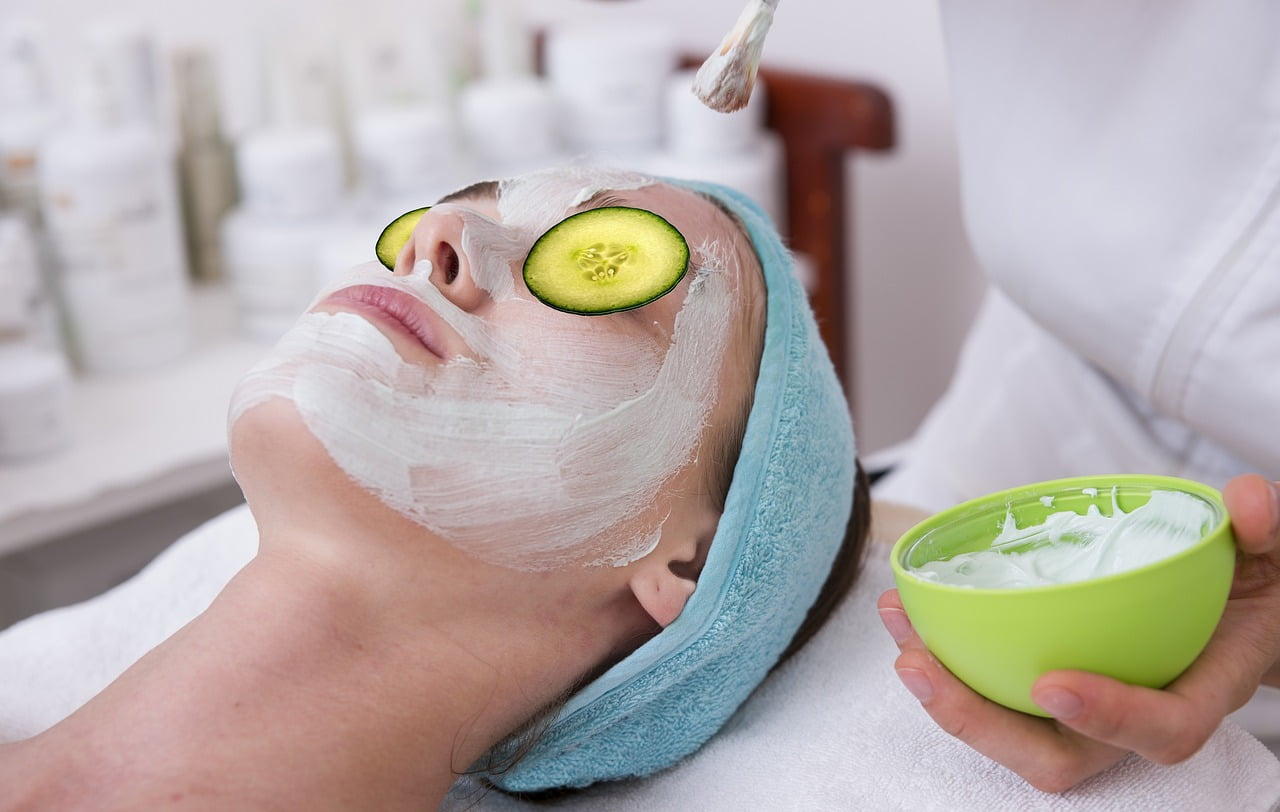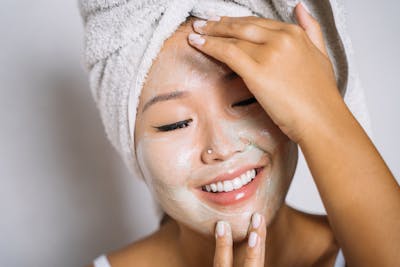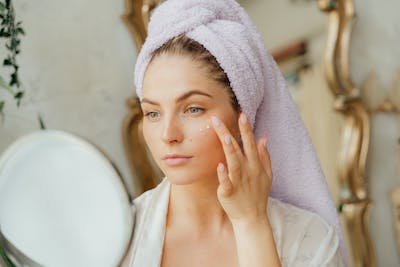How Sunscreen Helps Prevent Pigmentation and Dark Spots
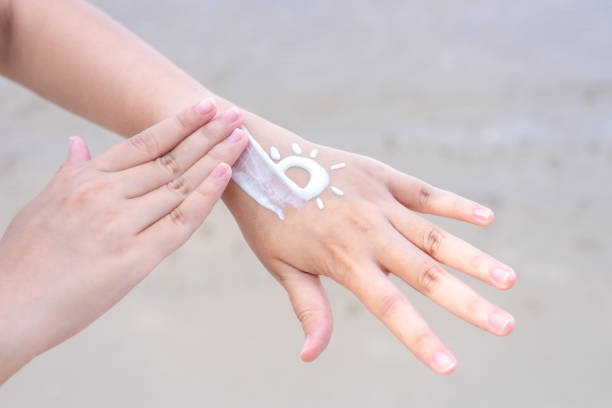
Different Forms of Sunscreen for Pigmentation: Choosing the Right One
If you’re looking forward to staying away from hyperpigmentation, there’s no way you can skip sunscreen even for a single day! UV exposure frequently triggers or worsens hyperpigmentation, which includes disorders including sunspots, melasma, and post-inflammatory hyperpigmentation. Sunscreen is therefore essential for controlling and avoiding pigmentation. However, not every sunscreen is created equal. They are available in several forms, and selecting the appropriate one can have a big impact on how successfully you protect your skin and deal with pigmentation problems. Let's examine the many sunscreen options for pigmentation, emphasizing their advantages, disadvantages, and practical use in skincare regimens.
1. Physical Sunscreen (Mineral Sunscreen for pigmentation)
These are the most popular ones, and the oldest ones too. Active mineral components included in physical sunscreens, such as titanium dioxide or zinc oxide, lay on top of the skin to physically block and deflect UV radiation. Because of the physical barrier they form between the skin and the sun, they are sometimes referred to as sunblocks.
Pros:
- Protection that starts right away: When physical sunscreen is applied, it starts to function.
- They do not take time for the skin to absorb them, in contrast to chemical sunscreens.
- Gentle on the skin: Because physical sunscreens are less prone to irritate sensitive skin, they are frequently advised for those with such skin.
- Broad-spectrum protection: In order to prevent hyperpigmentation, zinc oxide and titanium dioxide offer broad-spectrum protection against UVA and UVB rays.
- Lower chance of skin reaction: These sunscreens are perfect for those with melasma or sensitive skin who are prone to pigmentation problems because they do not enter the skin and are thus less likely to trigger allergic reactions.
Cons:
- Thickness: Those with darker skin tones may find physical sunscreens particularly concerning since they have a tendency to be thicker and may create a noticeable white cast on the skin.
- Regular reapplication: Physical sunscreens require more regular reapplication because of their consistency, which can rub off easily, especially when sweating or swimming.
Ideal for: People with sensitive skin, those who are prone to pigmentation, and those who want protection right away without having to wait for absorption.
2. Chemical Sunscreen for pigmentation
This one’s your go-to sunscreen option if you want to step up to the zero-white-cast experience with your sunscreen. Chemical sunscreens absorb UV radiation, transform them into heat, and then release the heat from the skin. In contrast to physical sunscreens, chemical sunscreens contain organic substances such as avobenzone, octisalate, oxybenzone, and octocrylene.
Pros:
- Texture: These sunscreens are often thinner and lighter in texture, which makes them simpler to blend and apply—especially for regular usage.
- No white cast: People with medium to darker skin tones who wish to avoid the white cast of physical sunscreens may find that chemical sunscreens absorb more smoothly into the skin.
- Water resistance: A lot of chemical sunscreens are sweat and water resistant, which is good for people who work out or are in humid areas.
Cons:
- Takes time to come into action: Chemical sunscreens must be administered for at least fifteen to thirty minutes.
- Potential skin irritation: Some people with sensitive skin or existing skin conditions like melasma or post-inflammatory hyperpigmentation may find chemical sunscreens irritating, potentially worsening pigmentation issues.
- Increased risk of breakouts: Certain formulations, particularly those that contain avobenzone or oxybenzone, have the potential to clog pores and trigger breakouts in people who are prone to acne, which may worsen post-inflammatory hyperpigmentation.
Best for: People with darker skin tones who prefer a more blendable sunscreen; people with normal to oily complexion; and people searching for a lightweight, no-cast solution.
3. Tinted Sunscreen for pigmentation
Are you looking for some extra protection? The tinted Sunscreens have an added layer of protection against visible light, especially blue light from screens, which may aggravate pigmentation problems. Tinted sunscreens come in both chemical and physical forms.
Pros:
- Blue light protection: Since blue light from digital devices can intensify hyperpigmentation, this is especially crucial for people who are prone to melasma.
- Cosmetic benefits: Tinted sunscreens can double as a light foundation or color corrector, offering both sun protection and a subtle, even skin tone.
- Broad-spectrum UV and visible light coverage: Many tinted sunscreens provide broad-spectrum protection, along with the added bonus of blocking visible light, which contributes to pigmentation in some individuals.
Cons:
- Narrow shade selection: Some skin tones, especially those with darker complexions, may not be adequately covered by the selection of tints.
- Heavier texture: Because some tinted sunscreens contain additional pigments, they may feel heavier on the skin and not be appropriate for all skin types.
Ideal for: Those seeking for a light-coverage sunscreen and those with melasma or post-inflammatory hyperpigmentation who are concerned about blue light exposure.
4. Spray-on sunscreen for pigmentation
Having to cover your arms and legs with an ordinary sunscreen isn’t really doable. So having a Spray sunscreen is a quick and easy way to protect yourself from the sun, especially if you want to reapply throughout the day.
Pros:
- Simple application: Covering big body parts, such as the arms and legs, in a short period of time is made easy by the spray format.
- Light texture: Sprays work well on oily or acne-prone skin because they are often non-greasy and lightweight.
- Reapplication is simple with them, especially when done over makeup, which is necessary for continuous protection all day.
Cons:
- Less coverage: Because it might be challenging to detect where the product has been put, sprays occasionally result in uneven coverage.
- Risk of inhalation: There's a chance of breathing in the spray, which could be unhealthy. Spraying away from the face and in a well-ventilated environment is preferable.
Ideal for: People with oily or combination complexion, those with busy schedules, and those who need to touch up frequently during the day.
5. Powder Sunscreen for pigmentation
Ready to mattify your makeup? Using powder sunscreens for pigmentation are becoming more and more popular, especially when applied again over makeup. They often have a mattifying effect on the skin and contain mineral UV filters.
Pros:
- Easy to reapply: Powder sunscreens work well for multiple applications throughout the day, especially when applied over makeup.
- Mattifying effect: Those with oily skin will love these sunscreens because they help reduce shine and oil.
- Convenient to carry and apply on-the-go: They eliminate the need to massage a cream or liquid sunscreen into the skin.
Cons:
- Less effective protection: Compared to liquid or cream sunscreens, powders could not offer as complete or even a coverage. Reapplication is necessary more frequently because of their powdered structure, which makes them insufficient for sun protection.
Best for: Oily skin, those who wear makeup, and individuals looking for an easy way to reapply sunscreen throughout the day.
Considerations While Buying Sunscreen for Pigmentation
It's critical to pick a sunscreen for pigmentation that offers the most protection against UV rays and other light sources that can make pigmentation issues like melasma, post-inflammatory hyperpigmentation, or sunspots even worse. The following are important things to remember:

- Protection by sunscreen for pigmentation
You can not miss this part! It's important to use broad-spectrum sunscreen for pigmentation, which blocks UVA and UVB rays, if pigmentation is an issue. UVB rays produce sunburn and acute skin damage, but UVA rays penetrate deeper into the skin and induce pigmentation.
Broad-spectrum protection is essential since UV radiation from both sources can worsen pre-existing pigmentation. To be sure you're covered from all sides, look for sunscreens that specifically state on the label that they provide broad-spectrum protection.
2. SPF Rating In Sunscreen for Pigmentation
The Sun Protection Factor (SPF) measures a sunscreen’s ability to protect against UVB rays. For anyone using sunscreen for pigmentation, an SPF of at least 30 is recommended, as it blocks about 97% of UVB rays. Higher SPF values, like SPF 50, offer slightly more protection (about 98%) and can be beneficial for individuals with very fair skin or prolonged sun exposure.
However, keep in mind that no sunscreen can block 100% of UV rays, so it’s still important to reapply regularly and pair it with other sun protection measures like hats and sunglasses.
3. Skin Type Considerations for sunscreen for pigmentation
The sort of sunscreen for pigmentation that is appropriate for you depends largely on your skin type. Your skin type should be complemented by the texture and formulation of your sunscreen:
- Oily or Acne-Prone Skin: To prevent blocking pores, use sunscreens that are lightweight, oil-free, or gel-based. Sunscreen that is non-comedogenic guarantees that it won't aggravate breakouts, which can worsen acne scar pigmentation.
- Dry Skin: Look for moisturizing sunscreens with glycerin or hyaluronic acid as one of the moisturizing ingredients. Cream-based sunscreens offer a hydration boost in addition to sun protection, which is especially useful for dry or flaky skin.
- Sensitive Skin: For those with sensitive or reactive skin, physical (mineral) sunscreens are usually the best choice. These contain zinc oxide or titanium dioxide, which are less likely to cause irritation or allergic reactions.
4. Ingredients to Look For In Sunscreen for pigmentation
When selecting a sunscreen to treat pigmentation, take into account the following components:
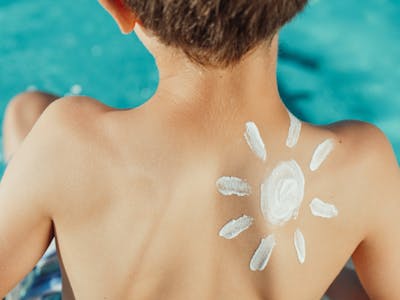
- In physical sunscreens, zinc oxide and titanium dioxide are the main active components. Because it is non-irritating and provides broad-spectrum protection, zinc oxide is an excellent option for skin that is sensitive or prone to pigmentation.
- Iron Oxides: Found in tinted sunscreens, iron oxides give protection against visible light, especially blue light, which can worsen conditions like melasma. Because of this, tinted sunscreens are a fantastic choice for extra defense.
5. Resistance to Water
Water-resistant sunscreen for pigmentation is essential if you spend a lot of time outside, particularly when swimming or in humid conditions. Even in the presence of perspiration or water, they continue to offer protection. However, keep in mind that these sunscreens still require regular reapplication, especially after swimming or heavy sweating.
6. Reapplication Ease
For effective protection against pigmentation, sunscreen should be reapplied every two hours. If you wear makeup, consider sunscreens that allow for easy reapplication without disrupting your look. Powder sunscreens and spray sunscreens are convenient options for touch-ups during the day, especially over makeup.
7. Visual Aspects
Some sunscreens, especially those with zinc oxide, may leave a white cast, which can be problematic for people with medium to dark skin tones. To avoid this, choose products labeled as sheer or transparent or opt for tinted sunscreens that blend more easily with your skin tone. Chemical sunscreens also tend to absorb quickly and leave no residue, making them a more elegant choice for daily wear.
By considering these factors, you can select a sunscreen that not only protects against UV damage but also addresses your specific pigmentation concerns.
How Sunscreens Work for Hyperpigmentation (Both Prevention and Treatment)
Hyperpigmentation, including conditions like melasma, sunspots, and post-inflammatory hyperpigmentation (PIH), is often exacerbated by exposure to ultraviolet (UV) radiation and visible light. Sunscreen plays a critical role in both preventing and managing hyperpigmentation by shielding the skin from these harmful rays and minimizing the triggers that cause the skin to produce excess melanin. Here’s a detailed look at how sunscreens work for the prevention and treatment of hyperpigmentation.
1. Prevention of Hyperpigmentation
The sun’s ultraviolet (UV) radiation, particularly UVA and UVB rays, is one of the leading causes of hyperpigmentation. UV radiation stimulates the production of melanin, the pigment responsible for dark spots and skin discoloration. Over time, cumulative sun exposure without adequate protection can cause these spots to become more pronounced. Sunscreen acts as the first line of defense in preventing these changes by blocking or absorbing harmful UV rays before they can penetrate the skin.
Blocking UV Rays
Sunscreens typically contain either physical (mineral) or chemical filters to protect against UV radiation:
Physical Sunscreens: These contain ingredients like zinc oxide and titanium dioxide that sit on the skin’s surface and reflect or scatter UV rays away from the skin. Physical sunscreens provide broad-spectrum protection against both UVA and UVB rays and are effective immediately upon application. They are less likely to irritate sensitive or pigmentation-prone skin and are ideal for people with melasma, which can worsen with irritation.
Chemical Sunscreens: These contain active ingredients like avobenzone, octinoxate, and oxybenzone, which absorb UV rays and convert them into heat, which is then released from the skin. Chemical sunscreens tend to be more cosmetically elegant, blending easily into the skin without leaving a white cast. However, they can sometimes irritate sensitive skin, especially when dealing with pigmentation issues.
By blocking UV radiation, sunscreens prevent the overproduction of melanin, the pigment that causes dark spots and uneven skin tone. This is especially important for individuals with melasma, as their skin is highly sensitive to UV-induced melanin production.
Protection Against UVA Rays
While UVB rays cause sunburn, UVA rays penetrate deeper into the skin and are primarily responsible for long-term skin damage like premature aging and hyperpigmentation. UVA rays contribute to oxidative stress within the skin cells, triggering inflammation and melanocyte activity (melanin-producing cells), which can worsen conditions like melasma and PIH. Broad-spectrum sunscreens protect against both UVA and UVB rays, making them essential for preventing hyperpigmentation. UVA exposure occurs year-round, even on cloudy days, so daily use of sunscreen is crucial for long-term pigmentation prevention.
Protecting Against Visible and Blue Light
In addition to UV radiation, visible light, particularly blue light (emitted by digital screens), has been shown to exacerbate pigmentation, especially in darker skin tones. Tinted sunscreens, which contain iron oxides, offer protection against visible light, adding an extra layer of defense for those dealing with hyperpigmentation. This is particularly important for people prone to melasma, as blue light can trigger pigmentation by stimulating melanocytes. Regular sunscreen may not protect against visible light, but tinted formulas with iron oxides are an effective solution.
2. Treatment of Hyperpigmentation
In addition to preventing new pigmentation from forming, sunscreens are essential in the treatment and management of existing hyperpigmentation. Consistent sunscreen use helps prevent dark spots from becoming darker and allows other pigmentation treatments, such as chemical peels, lasers, or topical lightening agents, to work more effectively.
Preventing Pigmentation from Worsening
Hyperpigmentation, particularly post-inflammatory hyperpigmentation (PIH), tends to darken with sun exposure. Even incidental exposure, such as walking to your car or sitting by a window, can worsen dark spots. By wearing sunscreen daily, even indoors, individuals can prevent further darkening of these spots. Regular sunscreen use reduces the risk of ongoing melanin production, allowing the skin to gradually fade existing hyperpigmentation.
Supporting the Effects of Topical Treatments
Many people undergoing treatment for hyperpigmentation use topical agents like hydroquinone, retinoids, or vitamin C serums to lighten dark spots. While these treatments are effective, they can make the skin more sensitive to the sun, increasing the risk of further pigmentation if the skin is unprotected. Sunscreen complements these treatments by providing a protective barrier that prevents UV rays from reversing the progress made by lightening agents.
Moreover, treatments like chemical peels or laser therapy often make the skin temporarily more vulnerable to sun damage. Without proper sun protection, the skin may rebound by producing even more melanin, leading to a cycle of pigmentation. Using sunscreen consistently after these treatments helps to ensure that the skin heals without the risk of new hyperpigmentation forming.
Protecting Healing Skin
After any skin trauma, such as acne, cuts, or even professional treatments, the skin may be more susceptible to hyperpigmentation. Sunscreen protects the healing skin from UV-induced melanocyte activity, preventing the formation of new dark spots. This is particularly important for PIH, which develops after the skin has experienced inflammation or injury.
3. Long-Term Benefits of Sunscreen for Hyperpigmentation
Hyperpigmentation is often a long-term condition that requires consistent management. Wearing sunscreen daily, even on cloudy days or indoors, provides ongoing protection against the environmental triggers that worsen pigmentation. Over time, consistent use can lead to a more even skin tone and prevent the formation of new dark spots.
In summary, sunscreen is an essential tool in both preventing and treating hyperpigmentation. By blocking UV radiation, protecting against visible light, and supporting other treatment methods, sunscreen helps manage pigmentation and improve skin tone over time. For the best results, a broad-spectrum sunscreen with an SPF of 30 or higher should be used daily, regardless of the weather, to maintain clear, even-toned skin.
Why Choose Revitalize London ?
At Revitalize London, we specialize in innovative pigmentation procedures catered to the particular requirements of your skin. Our team of professionals can assist you with sunspots, post-inflammatory hyperpigmentation, and melasma. We develop specialized programs using state-of-the-art technology, including chemical peels and laser treatments, to offer you clear, radiant skin. We take the time to learn about your skin issues and provide you with the best non-invasive treatments to bring back the natural brightness of your skin. Your skin's health and beauty are our first concerns at Revitalize London, and we're dedicated to providing genuine, noticeable results. Using Sunscreen for pigmentation makes the big difference you're missing out on.

